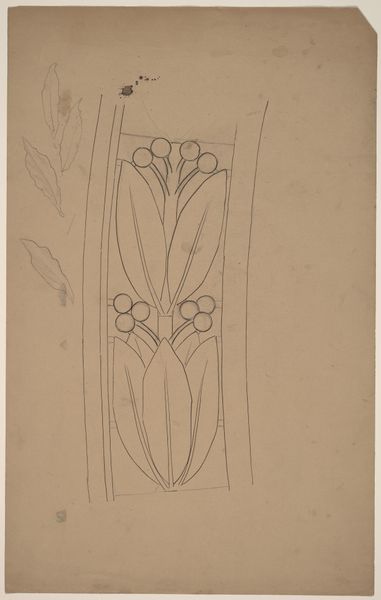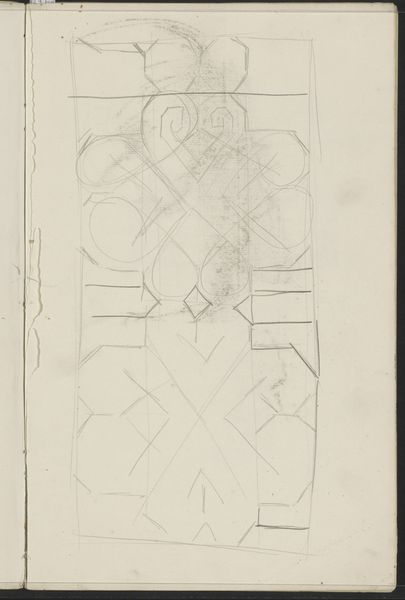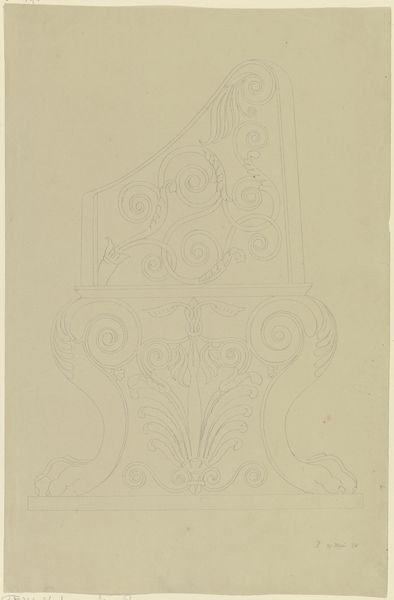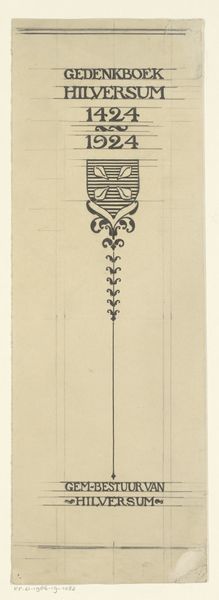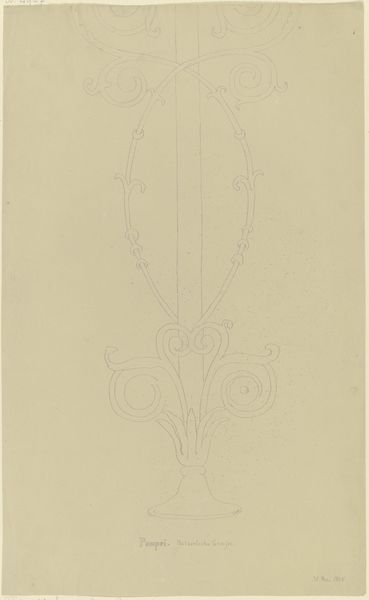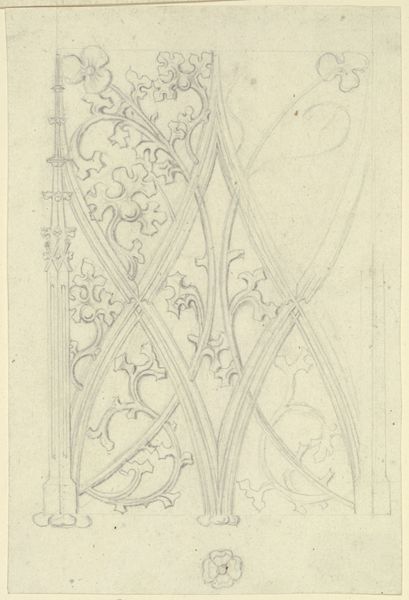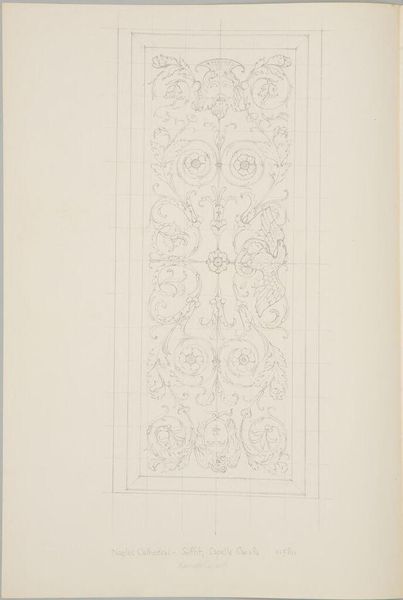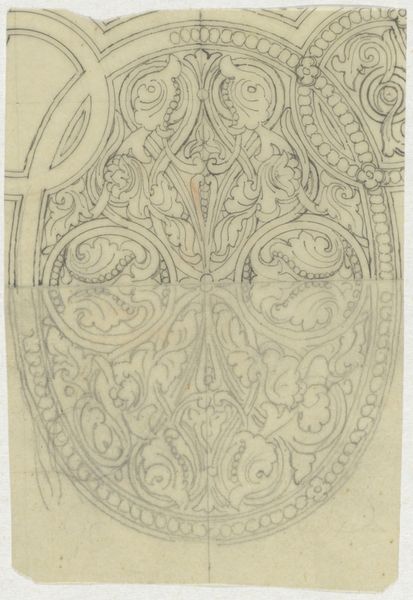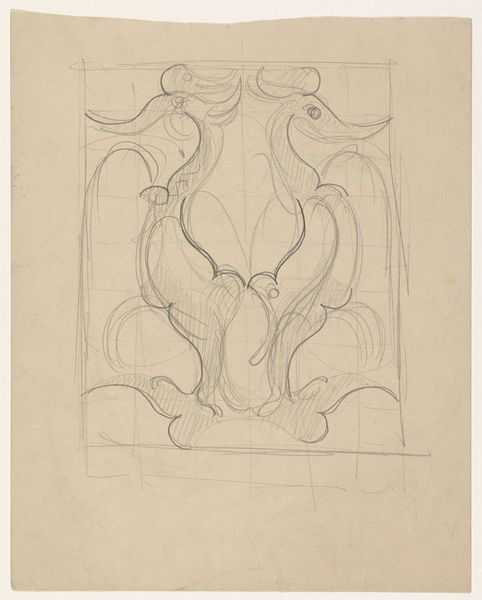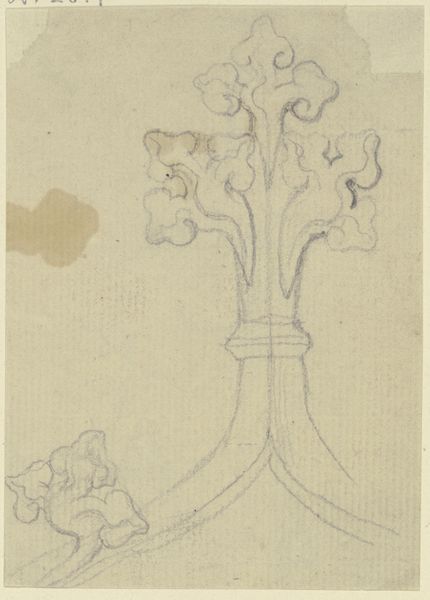
drawing, pencil
#
drawing
#
geometric
#
pencil
Dimensions: sheet (irregular): 37.3 × 16.5 cm (14 11/16 × 6 1/2 in.)
Copyright: National Gallery of Art: CC0 1.0
Curator: Welcome. Before us is "Tracing of a Border Design" by Charles Sprague Pearce, created sometime between 1890 and 1897. It’s a pencil drawing on paper. Editor: My first impression is of balance, though a sort of muted balance. The composition is decidedly symmetrical, with a series of repeating floral or plant-like motifs contained by somewhat rigid borders on either side. Curator: Indeed, and that repetition speaks to late 19th century anxieties about industrialization and a romanticized return to craft. There's a conscious attempt here to reassert organic forms within a design framework, nodding towards the aesthetic principles championed by the Arts and Crafts movement which also reacted against mass production dehumanization of labor and artistic practice. Editor: It is interesting you mentioned the anxieties because, looking at the details, that simple repeated curve of the bordering lines lends a rhythmic dynamism that both contains and, to a certain extent, releases tension from what would otherwise be static design elements. Also the bare pencil markings enhance the sense of lightness of the vegetal forms that evoke an airy and dreamlike atmosphere. Curator: Certainly. Furthermore, it raises critical questions around authorship and originality. How might Pearce's work challenge conventional notions of high art by appropriating a traditionally domestic form, elevating what could be viewed as craft into a form of fine art? Does it also suggest anything on our contemporary crisis and what it means to be human in an industrial age? Editor: I am compelled by how such an utilitarian artwork allows us to contemplate the fundamental elements of pattern and line in generating what essentially remains a harmonious effect. Perhaps the uncolored materiality in monochromatic medium allows us a window into a formal, stripped back appreciation for design's structural syntax. Curator: Yes, this work invites us to reflect not only on the artist's method, but also how our aesthetic expectations are intrinsically influenced by prevailing social, political, and economic structures. Editor: A perfect synthesis, in fact. The work presents a play of form and intention, all embedded within a unique historical fabric.
Comments
No comments
Be the first to comment and join the conversation on the ultimate creative platform.
